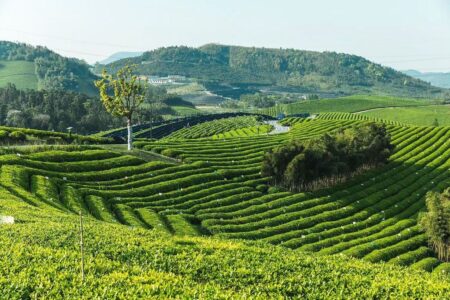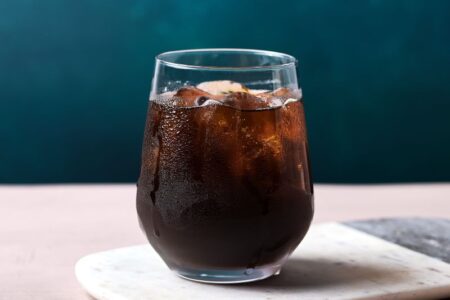Sustainable Packaging: How Far Have We Come?

Packaging protects the food and products we need to live and make life enjoyable. We like that about packaging. We also worry about the amount of packaging we use. Modern people use a lot of it and we are concerned about wasting the natural resources required to make it. We want packaging to be made without irrevocably destroying resources, laying waste to the earth and leaving nothing for the next generation. The opposite of this destructive process is what packaging people call a “sustainable” process.
Chasing Arrows Symbols
The “chasing arrows” symbols (in the U.S.) are not recycling numbers. While this news seems like a step backwards, hopefully it will pave the way for real progress. Most of us have seen the chasing arrows and may even have read that they mean materials with certain numbers will be recycled. It is a popular misconception is that if a product has one of these numbers on it, it is recyclable and will be recycled.In 2013, the American Society for Testing and Materials, West Conshohocken, Pa., announced that these symbols were “never intended to advertise a package’s recyclability, only to identify resin content.” The numbers were meant to help recycling facilities pick out products with the resins they wanted, but it turns out the numbers are too difficult to see as they pass by on a conveyor in the manual sorting process.
The ASTM is changing the “chasing arrows” to triangles to help eliminate the confusion. The change will be slow since manufacturers have expensive, existing tooling with arrows and 37 states have laws that require the original form to be used on plastic bottles or containers. The ASTM hopes the change will clarify the meaning of the symbols.
Recyclable Products
The technical definition of “recycle” is to take a used product and turn it into something else useful. From a purely technical perspective, many plastics are recyclable because they are thermoplastic. Thermoplastics can be re-melted after use and re-shaped into another plastic object. In fact they can be re-melted and re-shaped multiple times. There are many thermoplastic products in homes today including nylon stockings, PVC pipes, disposable diapers, vinyl siding, and even motorcycle helmet visors.
However, the more meaningful and practical definition of recycling is the ability to collect used products, re-melt them, re-shape them and find a commercially viable use for the re-shaped plastic. Not all products that technically can be recycled have a commercially viable use. No one wants products made from them and they cannot be can be resold.
When it comes to the products placed in home recycling bins, most recycling facilities have commercially viable options for only a small number of the plastic items collected. Milk jugs and plastic soda bottles are the primary ones. Only those items will be sorted, cleaned and sold. The rest will be sorted out and disposed along with any other trash. To make the issue even more challenging, some items cause problems at recycling facilities.
Plastic grocery bags are made of the same material as recyclable milk jugs, but they get caught in the sorting machines at recycling facilities and damage the machinery or slow down the process. Not only do they not get recycled, but most recyclers don’t want them because of the problems they cause.
Clean Water and Climate Change
These topics have come to the forefront in the packaging industry over the last several years. The importance of preserving clean healthy drinking water is getting traction at many packaging companies in the U.S. and should continue. With climate change, whether you see impending catastrophe or hidden agendas, the engineer in me sees products (carbon dioxide gas, methane gas, etc) that were not originally in the atmosphere being introduced in increasing amounts. That causes change to the system. It may be small change or big change, but messing with the atmosphere is not a sustainable practice and we see efforts by the packaging industry to reduce emissions of these “greenhouse gases.” That’s a positive change.
Compostable Packaging
Another positive change since 2008 is the development of compostable packaging and consumers using composting to dispose of some household items. Home composting is a method of recycling where the consumer controls the collection and sorting process and recycles organic material (food scraps, leaves, grass clippings, compostable packaging, etc) turning it into nutrient rich soil.
There are some companies, including PBi, that have developed packaging that addresses not only the barrier properties needed to keep your product safe, but move us toward a more sustainable packaging option. Are we there yet? The quick answer is no, although we are getting much closer and continue to work hard to get there. For shelf-stable products, the industry is able to respond faster. However, it is the unstable product, the products that undergo some transformation and that need more protection, where the challenges lie.
First and foremost, packaging must contain and protect the product inside. Longer distribution channels require more sophisticated packaging options, and in the case of a multi-laminate coffee bag, keeping the coffee fresh while allowing the CO2 to escape is key and a barrier bag with a functioning one way degassing valve is critical.
Sustainability in packaging is a complex issue where the needs and demands of consumers and marketing to those consumers, are not always in line with manufacturing and recycling facilities. Ultimately, as consumers, we need to advocate and put pressure on our municipalities to increase recyclability on the local level, reduce the amount of overall packaging we use, and continue to develop packaging that is based on renewable resources.



